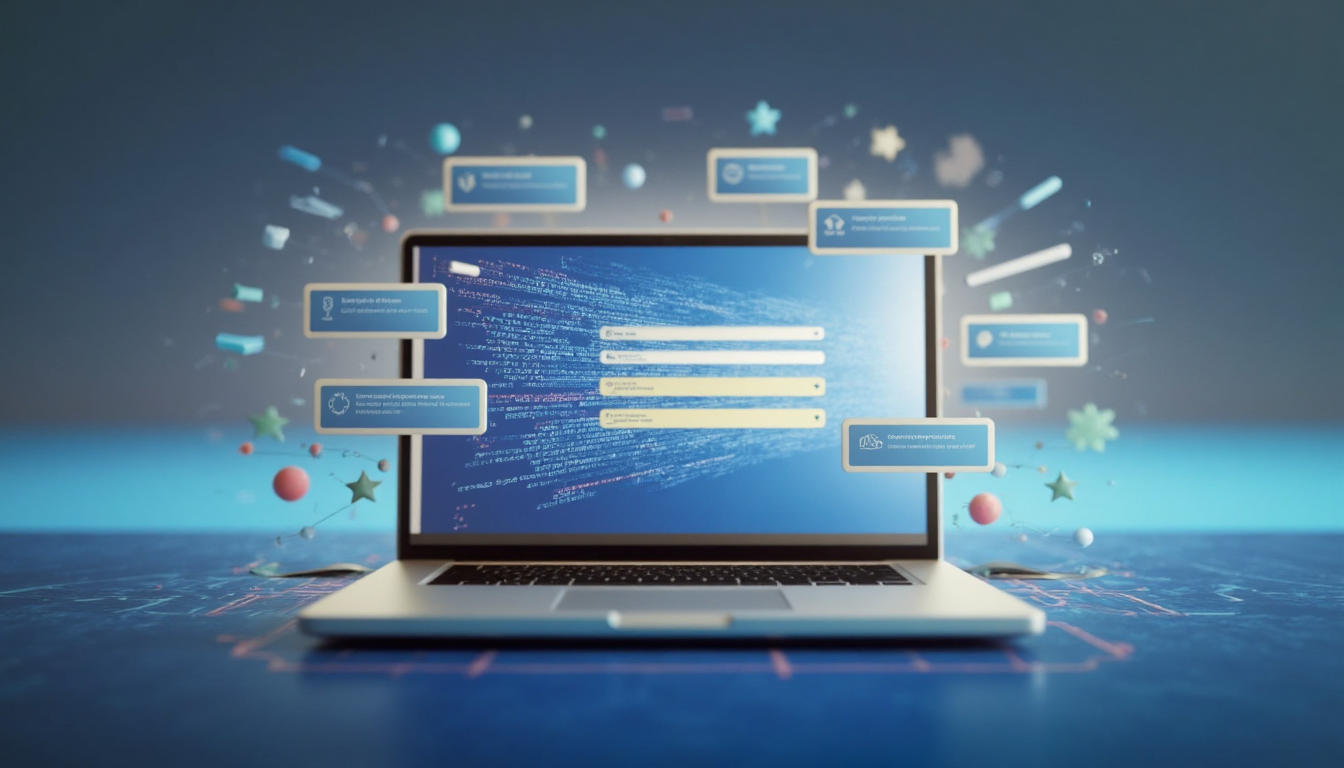Why Are You Still Doing Threat Modeling Like It’s 2009?
.png)
Are you missing the full picture in threat modeling?
Because it’s not as simple as finding security flaws. Instead, threat modeling is also about understanding how your entire system works and where it can break. Yet, too many enterprises rely on security teams alone to handle it. They assume that having deep security expertise is enough. (Disclaimer: It’s not)
Without knowledge of application architecture, automation, and compliance, your threat modeling efforts are incomplete. Most of the time, your security team would miss threats buried in complex integrations, misconfigured workflows, or regulatory gaps. Where do you think breaches came from?
Table of Contents
- Why Traditional Threat Modeling Fails in Enterprise Environments
- AI-Powered Threat Modeling Solves the Problems Slowing Enterprises Down
- AI-Powered Threat Modeling Could be the Only Way to Keep Up
Why Traditional Threat Modeling Fails in Enterprise Environments
How come you’re still relying on outdated threat modeling methods that involve manual reviews, spreadsheets, and static diagrams? That might work for small teams, but at the enterprise level, this is a one-way ticket to disaster. Security teams get buried in slow processes, models become inconsistent, and worst of all, security falls behind development. Let me tell you why.
Manual processes slow everything down
Most threat modeling today is still done manually. Security teams use spreadsheets, whiteboards, and static documentation to map out threats, assets, and attack paths. And that’s exactly why every time a new feature is introduced, or an architecture change happens, the process starts over from scratch. Don’t you think that’s too tedious and ineffective?
Here’s why this doesn’t scale in enterprise environments:
- Threat models are static, but systems change dynamically. A single architecture change can invalidate an entire threat model.
- Reviews take too long because a single threat modeling session for a large application can take days or even weeks. By the time security provides feedback, development has already moved forward.
- There’s no real-time visibility. Security teams often have to chase down developers for updates because there’s no automated way to track changes in applications or infrastructure.
Inconsistent reviews create security gaps
It could be that you have multiple teams responsible for threat modeling, but without a standardized process, results vary drastically. Some teams conduct thorough analyses, while others rush through. It’s not surprising that there are a lot of inconsistencies that lead to security gaps attackers can exploit.
- Different methodologies produce different results. One team may use STRIDE, another may prefer PASTA, and some may not follow a structured approach at all. It will be impossible to compare threat models across your organization.
- Human error leads to incomplete threat models. If a security engineer misses a critical attack vector or forgets to document a risk, there’s no automated validation to catch the mistake.
- Threat modeling knowledge isn’t shared. In many enterprises, security teams operate in silos. If one team discovers a threat pattern, it’s not always shared with others. (I’ll let your imagination figure out what’s gonna happen next.)
Security can’t keep up with development
Traditional threat modeling assumes a linear development process where security happens at fixed points. But modern enterprises run on Agile and DevSecOps, where code is deployed daily or even multiple times per day.
- CI/CD pipelines introduce constant change. Applications, APIs, and infrastructure are updated frequently, making static threat models obsolete almost immediately.
- Security reviews become a problem. Developers can’t afford to wait days or weeks for security to approve changes. When security can’t keep up, teams either skip the process or delay releases. Both a lose-lose situation.
- New risks emerge faster than security can react. Enterprises are adopting cloud-native architectures, microservices, and serverless computing, which increases the attack surface and makes manual security reviews impractical.
AI-Powered Threat Modeling Solves the Problems Slowing Enterprises Down
We’ve already established that threat modeling doesn’t work at enterprise scale. It’s slow, inconsistent, and disconnected from how modern teams build and deploy software. But what if there’s a very easy solution? AI-powered threat modeling can automate the process, eliminate human error, and deliver security insights that actually keep up with development.
AI delivers automated and real-time risk analysis
Manual threat modeling often involves hours of meetings, diagram creation, and documentation across multiple stakeholders. That process doesn’t scale. AI-powered threat modeling solves this issue by automatically analyzing:
- Application architecture diagrams (e.g., C4 models, OpenAPI specs)
- Source code repositories for permission models, sensitive data flows, and hardcoded secrets
- Cloud configuration (e.g., Terraform, CloudFormation, Kubernetes manifests) to identify exposed services, misconfigured IAM roles, or overly permissive policies
Using these inputs, the AI engine can auto-generate threat models in seconds to find threats based on known patterns and map them to application components, services, and data flows.
This analysis is also event-driven. Meaning threat models are regenerated any time there’s a change in source code, infrastructure-as-code, or deployment configurations. This gives security and engineering teams real-time visibility into risks as systems evolve, instead of relying on static models that are outdated by the time they’re reviewed.
Security and compliance frameworks are built in
AI-powered platforms don’t just guess what a threat looks like. They are also trained on and embedded with industry-standard frameworks and regulatory requirements. This includes:
- Threat modeling frameworks: STRIDE, PASTA, Kill Chain, MITRE ATT&CK
- Compliance mappings: PCI-DSS, GDPR, HIPAA, NIST 800-53, ISO 27001
This allows the system to:
- Map detected threats directly to control requirements (e.g., a detected lack of data encryption is flagged as both a technical and compliance issue under ISO 27001 and PCI-DSS)
- Highlight control gaps instead of just security vulnerabilities
- Auto-prioritize risks based on compliance sensitivity, business criticality, and data classification
So instead of just saying “this endpoint is exposed,” AI can say, “this endpoint exposes unencrypted PII, violates PCI-DSS 3.4, and should be mitigated immediately.” I mean, wow!
Threat modeling finally scales with DevSecOps
In traditional setups, threat modeling is not included in the development lifecycle. But with AI-driven platforms, threat modeling integrates directly with:
- CI/CD pipelines (e.g., GitHub Actions, GitLab CI/CD, Jenkins)
- DevOps toolchains (e.g., Jira, Slack, ServiceNow)
- IaC and configuration files checked into version control
This enables continuous threat modeling where models are automatically updated during code commits, pull requests, and deployments.
For example:
- A new service is added in a microservices architecture → AI scans the updated service mesh and adds it to the threat model
- A new API endpoint is introduced → AI checks it against known abuse patterns and compliance requirements
- A developer modifies IAM policies → AI evaluates privilege escalation risk and flags any policy misconfigurations
In short, security becomes embedded in development workflows. This is what allows organizations to scale threat modeling without creating friction between developers and security teams.
AI brings data-driven accuracy that security teams can trust
AI brings machine learning models trained on thousands of known attack paths, misconfigurations, and architectural flaws. And this brings several improvements:
- Context-aware analysis: AI understands the architecture in its full context. For example, it won’t flag a public endpoint as a risk if it’s behind an API gateway with rate-limiting and auth controls in place.
- Dynamic threat correlation: It can correlate multiple indicators (e.g., lack of input validation, user-controlled parameters, and insecure backend logic) to detect complex, multi-stage threats.
- False positive reduction: The AI learns from past feedback and real-world exploit patterns to reduce noise. Teams get high-confidence alerts, not an overwhelming list of generic issues.
- Auto-generated mitigation guidance: For each threat, AI platforms can suggest tailored controls or code changes. For example, if a service is vulnerable to IDOR, the system will recommend object-level permission checks, token validation, or request parameter whitelisting (depending on the stack).
The point is not even about how fast AI-powered threat modeling is. It’s smarter, more scalable, and better aligned with how modern software is built and deployed. It shifts security left without slowing anyone down, ensures consistent coverage across all teams, and finds risks that actually matter when they matter.
AI-Powered Threat Modeling Could be the Only Way to Keep Up
Manual threat modeling can no longer keep up with how modern enterprises build software. It’s too slow, too inconsistent, and too disconnected. But if you’re still using spreadsheets and whiteboard sessions to model threats, there’s no judgment (okay, maybe a little bit). Because it’s not efficient at all, and it exposes you.
SecurityReview.ai replaces that outdated process with real-time and AI-powered threat modeling built for how you actually develop today. It auto-generates accurate, compliance-aligned threat models in seconds. It can also detect risks the moment anything changes.
I can go on and on about AI-powered threat modeling, but how about booking a demo instead?
FAQ
What is AI-powered threat modeling?
AI-powered threat modeling is the automation of security risk identification using machine learning, predefined security frameworks (MITRE ATT&CK, STRIDE, NIST 800-53), and real-time analysis of code, configurations, and architectures. It replaces slow, manual threat modeling with faster, scalable, and more accurate security assessments.
How does AI improve threat modeling compared to manual methods?
AI improves threat modeling by automating risk detection, ensuring consistency, and integrating with DevSecOps workflows. Unlike manual threat modeling, which is time-consuming and prone to human error, AI continuously analyzes attack vectors, misconfigurations, and compliance gaps, reducing security review times from weeks to hours.
Can AI-powered threat modeling integrate with CI/CD pipelines?
Yes, AI-powered threat modeling integrates with CI/CD pipelines, static and dynamic security testing tools (SAST, DAST), and cloud security platforms. This allows for continuous security assessments, automated risk scoring, and instant feedback for developers to fix vulnerabilities before deployment.
Does AI-powered threat modeling replace security teams?
No, AI enhances security operations but does not replace human expertise. Security teams still play a crucial role in validating AI-generated findings, prioritizing risks, and applying business context. AI handles automation and scale, while security teams focus on strategic decision-making and advanced threat analysis.
How does AI help with compliance requirements like ISO 27001, PCI DSS, and HIPAA?
AI automates compliance checks by mapping security risks, vulnerabilities, and controls against industry standards like ISO 27001, PCI DSS, HIPAA, and NIST 800-53. It generates real-time compliance reports, audit logs, and policy enforcement recommendations, reducing manual documentation efforts and ensuring continuous compliance monitoring.
What are the main challenges of adopting AI-powered threat modeling?
The biggest challenges include integration with existing security tools, tuning AI models for specific business risks, and ensuring security teams trust AI-generated insights. Enterprises need to combine AI automation with expert validation to achieve accurate and actionable threat modeling results.
What industries benefit the most from AI-powered threat modeling?
Industries with strict security and compliance requirements benefit the most, including financial services, healthcare, cloud computing, government, retail, and industrial IoT. AI-powered threat modeling helps these industries detect risks earlier, improve compliance, and accelerate secure software development.







.png)
.png)
.png)





